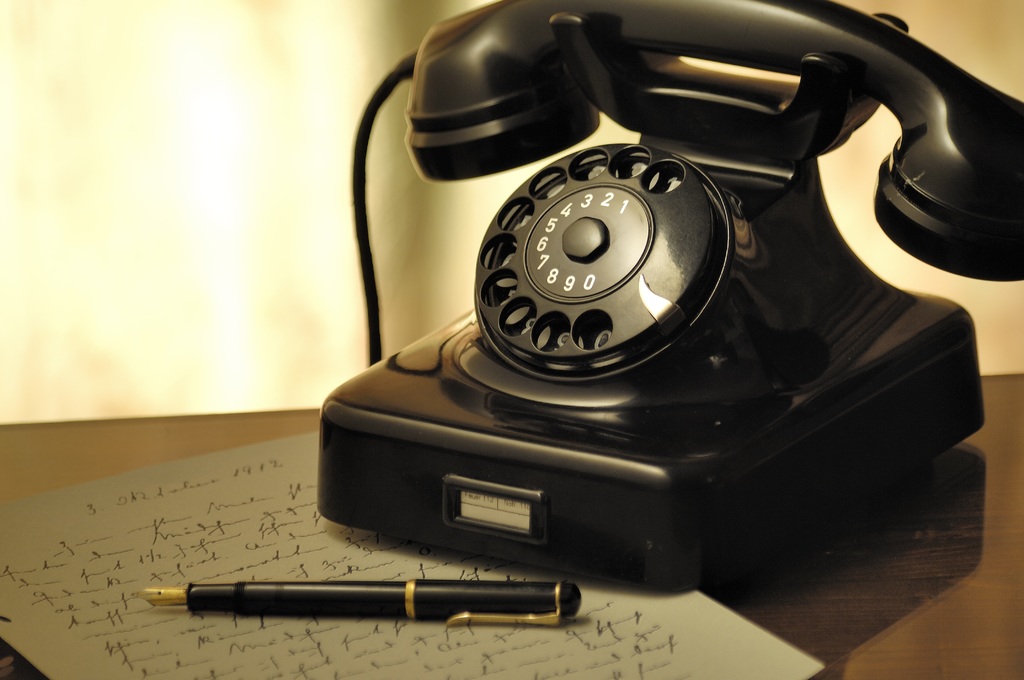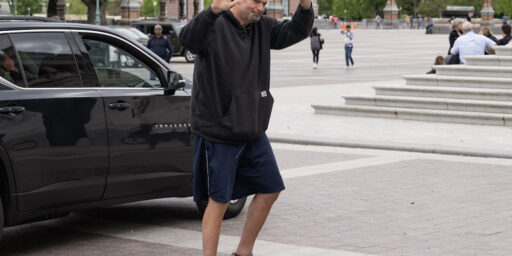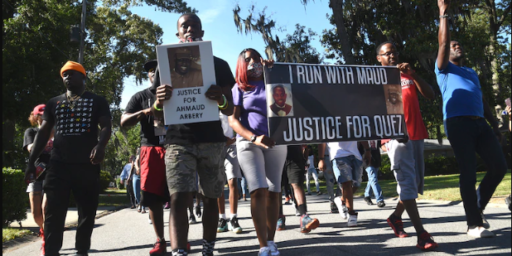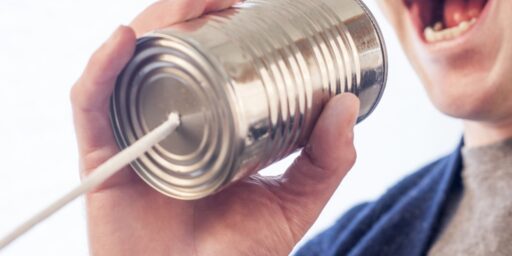What’s the 771?
DC's new area code is causing an identity crisis.

from PxHere
WaPo (“Seven-seven-what? After 74 years, D.C. braces for a new area code.“):
The plethora of timeless symbols that define Washington include the White House, the Lincoln Memorial and a venerated area code that evokes power and prestige: 202 — the digital entryway to the nation’s capital.
For now.
After 74 years, a city accustomed to all manners of change — new presidents, new senators, new restaurants, new neighborhoods — will face another shift: a second area code.
Alongside 202, later this fall there will be 771 — sandwiched between 770 (in the Atlanta suburbs) and 772 (in east central Florida).
Changing something that has been in place for three-quarters of a century is newsworthy. But it’s hardly a newfangled phenomenon. I remember when Alabama, which had all been in the 205 area code since 1947, got a second one (334). It was in 1995—26 years ago now.
But DC being DC, this is an existential event.
“202 has always been Washington — it’s as much Washington as the Capitol building,” fretted Robert Shrum, the veteran Democratic consultant who still maintains his 202 number 16 years after leaving D.C. for California.
“771?” he asked, sounding incredulous. “I’m trying to think of an analogy but one doesn’t immediately spring to mind. I get to keep the 202, right?”
I’m old enough to remember—as is Shrum—a time when people who moved to new states or, indeed, new cities, had to get new phone numbers. And when locals even in relatively low population communities could tell where you lived based on the second three digits of the phone number. But, yes, he gets to keep the 202; the 771 will be for new numbers only.
In a city of infinite government acronyms, it’s only fitting that the seismic telephonic shift was enacted by an agency that draws little notice, the D.C. Public Service Commission (DCPSC), which notes that 202 is expected to “run out of new phone numbers” next year. The 771 area code could be assigned as early as Nov. 9.
The commission also announced that Washingtonians will have to dial all 10 digits when making local calls beginning Oct. 9.
10-digit dialing took some getting used to when I moved to the DC area just shy of 20 years ago. But, since most of us dial numbers automatically with our mobile devices these days, nobody should notice the difference now.
The concept of “running out of new phone numbers” seems rather odd. There are, after all, seven digits after the area code. Theoretically, that’s just shy of 10 million possible combinations. Even excluding numbers starting with 0 (“operator”), various “x11” combinations, and the like, you wouldn’t think a city of under 700,000 would “run out” of numbers. But, again, this issue has been a thing for decades now.
Yet the distinction in area codes — one suggesting longtime roots in Washington, the other evidence of a more recent transplant — could become a new status symbol in a status-obsessed city.
Donna Brazile, for one, is all too happy to hang on to her 202 number.
“Sounds like we are aboard the next ‘starship’ with flight number 771,” texted the Democratic strategist who lives in D.C. “Can you imagine my folks in Louisiana remembering area code 771 when they’re evacuating during the next hurricane?”
Tommy McFly, a podcast and radio host who moved from Pennsylvania to D.C. in 2006, recalled the pride he felt when he got his new 202 telephone number. “It blew my little Scranton mind,” he said. “It made me feel like a Washingtonian.”
The thing is, for the last quarter-century or so, anyone living anywhere could get a 202 number if they wanted one—at least on their mobile. While I worked in DC for a few years, I’ve lived in Northern Virginia since 2002. I’ve always had a 703 area code but could certainly have gotten a 202 if I had so desired; hell, I could have a number associated with Hawaii if I wanted.
The arrival of 771, he said, feels “gross and bland” and “makes me so angry.” He said the remaining 202 numbers should be reserved for D.C. denizens, with 771 assigned to federal agencies.
“I don’t think a member of Congress from Missouri would appreciate the 202 as much as someone who lives here,” he said. “There are probably tens of thousands of 202 numbers that could be given back to the people.”
One imagines that a Member of Congress from Missouri would have one of the six area codes associated with their home state. But, otherwise, it amuses me to think that the Federal government—the whole reason for the existence of DC to begin with—is somehow infringing on the rights of the residents by usurping the area code associated with the seat of government.
The agita strikes some as a tad overwrought.
“Getting high and mighty about an area code is a little much for me,” said Josh Burch, a statehood activist. He sees the addition of 771 as a positive development — fresh evidence that D.C. has grown enough to deserve voting rights in Congress.
“There will be a whole new generation of 771 that will look at us old heads as people from a previous era,” he said. “202 is great, but we’ll embrace 771, too.”
Indeed, the breathless quotes aside, I suspect most Washingtonians care very little. Indeed, given the high transplant rate, I suspect a large chunk of them already have non-202 area codes. And if Alabamians can get used to going from “202” to “334” to a total of six area codes—all in the span of fifteen years—I suspect the rather less provincial District can overcome this obstacle.
Regardless, it’s somewhat interesting that the now-seemingly-random sequencing once had a rhyme:
D.C.’s 202 dates back to 1947, the era of the rotary phone, when AT&T designated area codes across the country to facilitate long-distance calls that did not require an operator. Those states small enough to only have only one area code — Maryland (301) and Virginia (703), for example — were assigned ones with a ‘0’.
More populous states were given multiple area codes that included a ‘1,’ such as New York City’s 212, Los Angeles’s 213 and Chicago’s 312.
But change was inevitable as localities grew in size. And complaining about it is not a new thing.
In the early 1980s, New York officials protested when Brooklyn and Queens were stripped of the iconic 212 and assigned 718. “Seinfeld” dramatized area code anxiety more than a decade later, when Elaine, a resident of Manhattan, tried to explain to a prospective date the meaning of her 646.
“It’s a new area code,” she says.
“What area?” the man asks. “New Jersey?
“No, no,” Elaine insists. “It’s right here in the city. It’s the same as 212.”
After asking if he has to “dial a one first,” the man retreats, explaining, “I’m really kinda seein’ somebody.”
Still, even people who ought to know better are attached to the old ways.
Mitchell Moss, a New York University professor who can remember a time when phone numbers began with letters, said Gotham “has survived every assault on its status,” including the assigning of 347 and other new area codes.
But he said the prospect of dialing 771 to reach the high and mighty in Washington is an “insult to the status of the nation’s capital.”
“It’s second tier,” he said. “It’s like getting a seat in the balcony.”
People are odd.






No, people are idiots. Choosing to get upset over a thing that in this cell phone day and age isn’t even an inconvenience? Gimme a break.
People don’t like change, some people are always grasping for something that imbues them with status, so they make banal claims about having the 202, 212, 617, 612, 314 prefix, whatever was the historical prefix for their area. Meaningless.
Here in Cow Hampshire we will soon have a telephone number uproar, as we will be forced into 10 digit dialing. A 9xx number for a suicide hotline is to be introduced this fall and that number conflicts with a single central office code (where telco switching gear is housed) in Portsmouth. No more 7 digit dialing will be treated as an extinction event.
The Denver metro area was the geographically largest toll-free calling area in the US when it became necessary to add another area code. Part of the deal the phone company(ies) reached with the state regulators included mandatory ten-digit dialing. Boy, you should have heard people scream about that!
“More populous states were given multiple area codes that included a ‘1,’ such as New York City’s 212, Los Angeles’s 213 and Chicago’s 312.”
From what I remember, larger cities were given area codes with low numbers as they had less rotation on the old rotary phones. Once phones went touchtone, they pretty much lost their justification.
I once had my area code change – from 415 to 650 – while staying in the same place. It wasn’t just for new numbers only.
Oh, and I’m getting notices about 10 digit dialing being necessary. Except that it’s already what I do, though mostly what I do is better described as “one tap dialing”.
@Michael Cain: I was there for that! Started out 303, right, then added 970 outside the Denver metro area?
Wyoming is still the good ol’ 307. There’s entire clothing lines and sports merchandise based on it. Businesses of all sorts incorporate it into their business name.
@Jay L Gischer: The same thing happened to my parents. They were still in the 205 when Alabama split but were eventually split into the 256. They got over it.
@Arnold Stang: Exactly. (I worked for Bell Telephone Laboratories long enough ago that I had to learn a bunch about history of telephone switching.) The number of electromechanical registers needed to collect dialed digits was based on statistical models of holding time, which depended on the number of dial pulses. Big cities got the small-digit combinations because they were the bulk of the long-distance traffic.
For the youngsters… on many landlines, it is still possible to dial numbers by tapping them out on the switch under the handset if you have a steady hand and an old desk phone.
I reread this comment and realized it describes a completely different world than most of us live in today. Still decided to post it.
We’re all conservatives now.
This reminds me of a recent paper on conspicuous corruption
I wonder if something similar will transpire for the remaining 202 numbers.
@Jax:
719 for the south and east parts of the state, then very shortly after 970 for the north and west, then a few years later the 303/720 overlay that required ten-digit dialing for local calls. The 303/720 area is scheduled to get a third code next year.
Mexico abolished domestic long distance fees. Now all calls require the area code, but that’s given in the number. My office number went from, say, 2222-2222 to 552222-2222, and this works as well wherever you place a call.
Around the turn of the millennium, I was involved in a number or area code additions around Chicago. I actually drafted all of the regulatory agreements setting up all of what were then area code “splits” where the geography of an area code was actually split for the sole purpose of maintaining 7-digit dialing for local calls. I represented a wireless carrier and we pushed for “overlays” where the second area code would be added to the same geography, avoiding anyone having to change their number, but would require 10-digit dialing for all calls to preserve parity so people in the new are code were uniquely inconvenienced by being the only ones who had to dial 10-digits all the time.
At that time, the idea of dialing 10 digits on a regular basis was considered outrageous and something that customers could “never accept,” and very little regard was given to businesses (and residences) having to change their numbers and educate their customers.
But new area codes were being added at an alarming rate, causing a lot of discussion about when we run out of area codes or area codes have to become 4 digits. That increased number consumption was caused were by second lines for dial up or fax or a third line for both, cell phone, car phone, etc. They were also being eaten up by competitive phone providers because numbering resources were assigned in 10,000 blocks (a single prefix with 10,000 possible combinations of the last four “line numbers”). So an exchange with 6,000 customers that had been served by a single phone company with a single prefix – 10,000 numbers, suddenly needed another 20,000 numbers dedicated to it when two competitors entered the market even though there were still only 6,000 in use. Most area codes also have dozens or a hundred exchanges (local calling areas) so each prefix could be assigned only to a single local calling area, also eating up and marooning numbering resources.
Eventually number portability and number pooling alleviated the problem of over allocation and marooned numbering resources, but the numbering problems really began to abate when broadband/Internet negated the need for a second home line and fax line, everyone ditched their car phones and many people ditched their home phone.
DC has probably been the last to area code expansion mainly because the whole city is (I am guessing) one single exchange so all the prefixes can be used anywhere in the city and their are fewer marooned numbering resources. If it weren’t for people keeping their fancy 202 cell phone numbers, it could probably have gone on for a lot longer with a single area code.
Have I mentioned that identity is important to people?
(And that said identity is often not linked to necessarily rational positions?).
A separate area code just for the federal government kinda makes sense. It would be the telephony equivalent of .gov. Is 420 or 666 available?
The whole area code system is pretty much an anachronism at this point. I got my current phone number about 15 years ago when I lived in Florida and have kept it since. We haven’t had a landline in a decade and I’ve never had any need to get a local Google Voice or other virtual number.
I have a 919 number left over from North Carolina where I opened my current cell phone account. And it’s great. See, I don’t know anyone from NC, and those I do know I don’t want to hear from, so any time my phone lights up with an incoming 919 number I know it’s some fuckwit algorithm calling with an order of spam. If I had a proper Los Angeles 213 I’d end up listening to a whole lot of offers for extended warranties on cars I no longer own.
@Andy:
Oh for a government capable of a sense of humor.
@Michael Reynolds: Yeah, my Florida number serves as a great spam filter. But it’s kind of sad spam calls are still a problem.
As alluded to for other areas in other folks’ comments, some of the fuss may be that the District will have to give up seven-digit dialing entirely.
ASTRUD GILBERTO “The Telephone Song”
Anyone else old enough to remember the days of names for exchanges (mine was OLympic) and 5 digit dialing within that exchange? The change to all digit dialing brought its own protests:
PS I hope this works
This brouhaha reminds me of an old story about a formal dinner party in England. A minor official realized that according to correct social ranking his seat at the dinner table should be moved closer to the host. After informing the hostess, a last minute shuffle of seats was done to address his concerns. Watching this he apologized to the hostess for the trouble, and she said, “Oh its quite all right. For this sort of thing we have found that people who mind don’t matter and people who matter don’t mind.”
LOL! Liberals with too much time on their hands, kvetching about a new area code.
@Andy:
I read recently, I don’t remember where, that we have created the greatest communication systems in human history and are in the process of making them unusable through spam.
I blame the people who buy stuff or send money to anyone who cold calls them. I have maybe twice in my life received unsolicited information from a company that made me want a product or service. No purchase though because i don’t want to create any incentive for these calls to keep happening
@TRH:..and 5 digit dialing within that exchange?
As recently as 1985 when I moved away from the General Telephone Company exchange in Cartervlle, Illinois subscribers could dial just the last 4 digits (the address) of a local telephone number to make a connection within that exchange. That ended when the Carterville Central Office was cut over to a digital switch from the old electro-mechanical step switch a year or two later. A project I worked on. Seven digit dialing for all local calls was required after that. Today the 618 NPA is transitioning to 10 digit dialing that will be mandatory in October.
————-
Got the EDIT key after one page reload…
Hey Johnny!
Hope you don’t have to burn the furniture in your fireplace again next winter to keep warm.
@TRH: I hadn’t heard the Allan Sherman number before, but I do remember a similar number from the Stan Freberg radio show (no, I’m not old enough to have actually listened to it live). Alas, it doesn’t appear to be clipped out of the show as a youtube selection as other more famous ones have been.
@Michael Cain:
Wait… You can still do that?! I thought that became obsolete when touch-tone took over.
In uni, there was a phone in the scene shop that didn’t have a dial. A select few of us knew we could call long-distance (remember when that was a thing?) from the shop and the uni would pay the cost.
I got real good at the tapping. 🙂
@TRH:
I remember 7-digit dialing. The middle digit of the exchange could be eliminated if you were within it. So 123-4567 would work if you dialed 13-4567
Just an interesting note:
There are no area codes that begin with “11x”–and there never will be.
Why? Because the “dial 9 for an outside line” doesn’t apply for 911.
9+11x-xxx-xxxx would ignore the last 8 digits and go directly to 911. Corporate phone systems are slowly moving over to a “dial 8 for an outside line”–a move strongly supported by 911 call centers. (A friend of mine is a 911 dispatcher and this came up in a conversation.)
@Mu Yixiao:
In some places. Less and less so as the “antique” central office equipment is removed for various reasons. Touch Tone® is old, too. (All in-band signaling is old.) I was peripherally involved in a systems engineering study when I was new at Bell Labs, and the next generation switching system was being designed. The question came up, “Which is cheaper, including pulse dialing in the new switch or giving everyone who lacks one a Touch Tone® phone?” The answer was give them the phones. We were told to destroy the results, scrub the files, and forget that we had ever done that work. Legal was terrified that the Bell System would be fined big bucks for not conducting such a replacement program years earlier.
Geez, I am so old.
@TRH:
From the song… I’m sure my grown children don’t remember that there was ever a time when “Let’s all take our business to another phone company!” was a completely empty threat.
@Michael Cain: I’ve always thought that was the best line in the song. My grown children don’t remember that time either.
@Mu Yixiao: Where I grew up, it was the last 4 digits. After the two letter exchange became 2 letters and on number–I still vaguely remember the old “dial 2 letters and FIVE numbers” ad–Seattle was a big enough city that we went strictly to dialing the whole number in every case. Flashing forward to ’85 and grad school, the town was small enough that the university had it’s own centrex system (at least as explained in the student handbook) and since all the numbers on campus were on one exchange, you only needed the four numbers that made linked to the specific extension to ring a number. The school districts that I teach at have a similar system these days, but I don’t know how it functions.
@Michael Cain: I actually HAD another phone company when I lived between Kirkland and Woodinville in Washington. In the early days of those communities, GTE managed to become the phone company for the region. I had a neighbor who decided that it was important to have his Seattle phone number ring in his home, so he had a line trunked (?) to it. It cost hundreds (maybe thousands, I don’t really know) to get it done.